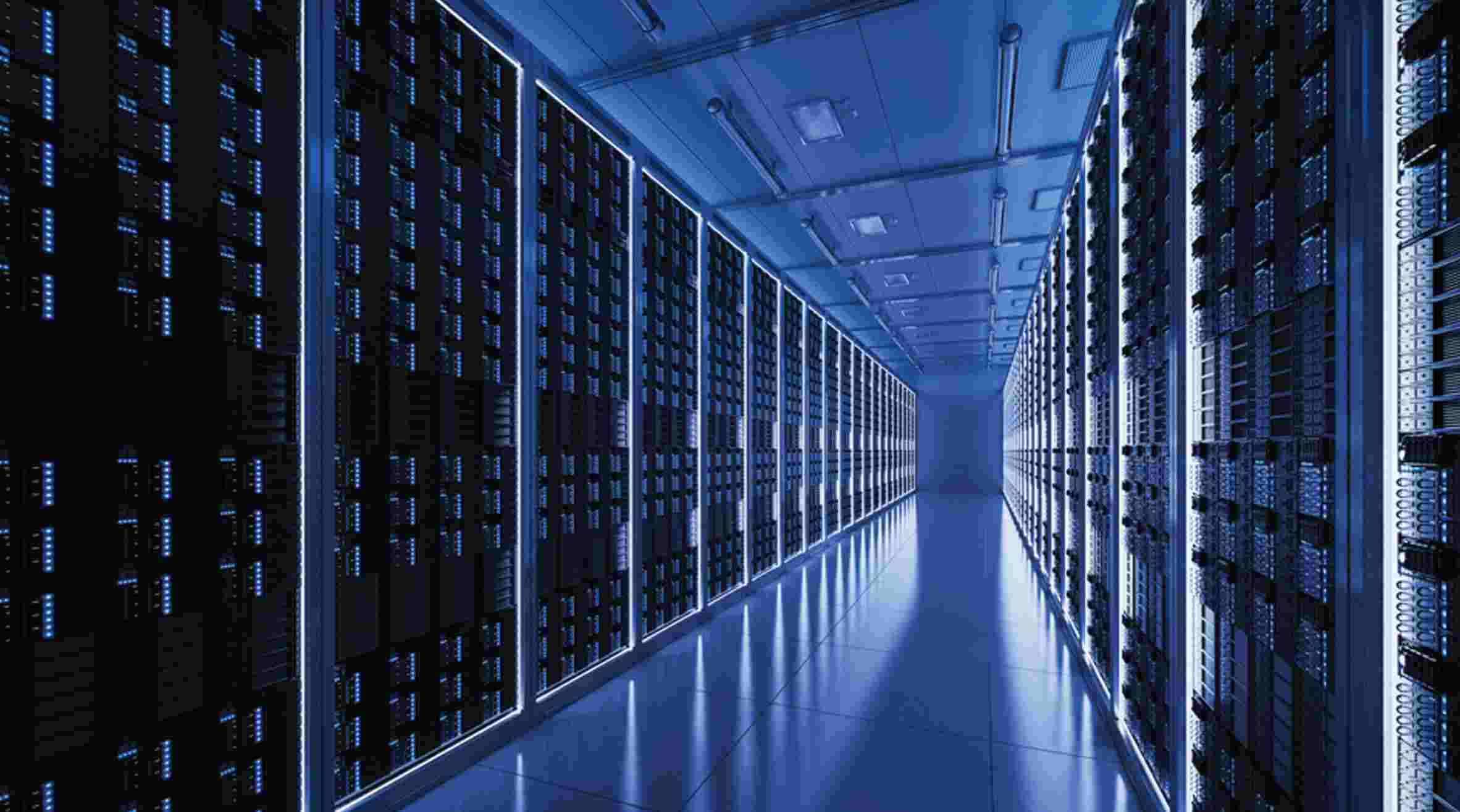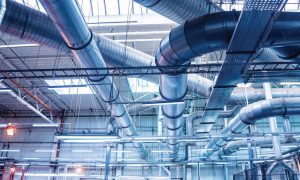The growth trends and sustainability in data center space is taking a leap forward. Experts opine, strategic cooling efficiency elements and PUE optimization as critical factors for data center operations with increasing capacity addition.
The rapid transition to a digital economy has witnessed a huge data explosion. Several Indian companies are setting up data centers, which are powerintensive consuming huge power. With cloud technologies and the rapid growth in data leading the way; working with the right data center optimization technologies has become more critical nowadays.
India is fast emerging as a location of choice for data center major. Infra status to data centers as announced in budget may touch Rs 70,000 crore investments over 10 years. Under the hyperscale data center scheme, the government is targeting investment of Rs. 3 lakh crore in the next five years and is planning to dole out anywhere between 3-4% of capital investment as incentive to companies.
There are new demands around cloud computing, new generation processors for AI, ML, and data analytics. They will require much power and generate more heat, so cooling efficiency is a major concern. The sole purpose of data center cooling technology is to maintain environmental conditions suitable for IT equipment operation. Moreover, inefficient cooling systems can increase power costs.
According to industry estimates, the average data consumption will rise by over three times to 50 gigabytes (GB) per month by 2027 over 14.73 GB as of October 2021. The Indian DC industry is expected to add a capacity of 804 MW during 2022-2024. This huge capacity addition would entail demand for 9.7 million sq. ft., of real estate space with an estimated investment outlay of USD 5.5 billion in setting up data centre facilities.
Driven by a diverse range of consumption and demographic trends, India’s data centre industry is poised for a sustained period of growth. Also, data center operators are incorporating sustainability measures by trying to reduce energy consumption as well reduce carbon footprint through use of green energy. In times of free Covid era there were server rooms in data centre. Post Covid all of us are connected on the net, and huge volume of information is being saved on the net. Speaking on growth of more data centre, Mr. Sandeep Vasant, National Head of Sales and Business Development – India Hyperscale Data centre, FlaktGroup India Pvt. Ltd. says, “More data centre means more hyperscale data centre, which is a larger data centre per se. Earlier, it was more of a mechanical equipment. Nowadays, it is more often automation. People are also talking about artificial intelligence. Definitely hyper scale is the need and more investment is needed.”
Much of the industry growth is likely to happen around Mumbai and Chennai due to their business and infrastructure advantages, coastal strategic location, and cable landing stations. India is currently home to over 80 third party data centers and is witnessing investments from both local and international players that are expected to touch $4.6 billion per annum by 2025. Mumbai, with a 199 MW IT load is the leading data centre hub of the country with cable connectivity and assured power supply. Data centers capacity in Mumbai, the country’s commercial capital, is likely to grow 2.65 times to 529 MW by 2023. The city is expected to add 330 MW in the next two years and Navi Mumbai is expected to account for 83 percent of these additions in the Mumbai region. However, with increasing growth and load on data centers, heat generation needs to be controlled. That needs thermal optimization, space cooling optimization involving various cooling strategies including insulation, refrigeration and increasing energy efficiency
Thermal insulation
Because of increasing data volumes, power consumption can be reduced which will impact cooling efficiency. Thermal insulation imparts cooling efficiency. Talking on scope of the refrigerant pumping very close to that intended use, Mr. Sitanshu Bachheti, Key Account Manager-West, Armacell India Pvt. Ltd., remarks, “You need to prevent it from heat gain losses and, that is why the power consumption will again increase. On reducing the distance from the supply to the source, definitely the power consumption gets reduced because the pumping gets reduced. Obviously, power consumption has to be controlled in any way, because of the increasing cost on HVAC loads and other things.”
For arriving at thickness of insulation such as with nitrile rubber, design consideration are necessary. Mr. Sithanshu says, “What we need is the parameters like, what is the ambient temperature and what is the temperature of the cooling medium, chilled water pipeline or a cooling air cooler flowing from duct and after again, after calculating the air surface etc.”
It is a very important factor to maintain the surface temperature of the insulation above the dew point temperature. This factor we take for surface insulation, with the relative humidity which is present in the environment in the ambient air. With these factors the thickness of the insulation can be achieved and thus we can achieve thermal optimization.
Data centers need a continuous power supply and cooling systems. Expanding further, Mr. Pravin Rawool AVP & Business Head, Godrej MEP says, any disposal of equipment adds to e-waste. The combination of clear objectives, better asset management, and automation in Cloud Migration creates a greener data center, which in turn results in the exponential growth of overall efficiency.
PUE optimisation
Thermal optimization has improved by combining building management with Siemens’ AI-powered White Space Cooling Optimization, increasing the building’s energy efficiency and contributing to its target Power Usage Effectiveness (PUE) value of 1.2, against an industry average of around 1.6. Crucially, the software also ensures thermal protection of server rooms by automatically adjusting the operation of the cooling systems. Mr. Akshay Dev, Head of Business Development & Applied Businesses Data Centre, Climaveneta India a Group Company of Mitsubishi Electric. PUE average is about 1.5. When you have technologies like free cooling, it can go as low as 1.2, like the Google data centre. But when you want to know what impact it can have, it’s only a positive. There can be no negative impact on this. So there’s a huge positive impact to everyone in the supply chain. So, OEMs need to provide more efficient equipment, whether it be chillers, it is very useful for the data centre providers. They can demand from their end customers, a higher remuneration in terms of per square foot. The industry is only going to evolve when that happens. He says, “In my opinion, there is no downside to PUE. You can never say there is a downside to it. There’s only going to be an upside to it.”
In recent years, hosting providers have adapted some guidelines to maintain their operations without too much disruption. Resistors, analog semiconductors, wires, and other smaller components are crucial for the assembly of data centers. These components need to receive extra attention to ensure that operations continue without interruption. Here the need arises to get parameters certified for data center solutions. Guidelines are there but Mr. Akshay is of opinion, besides other prevailing ASHRAE guidelines and certifications, for the AHRI parameters, products are tested for the ambience. The chilled water temperatures are nowhere close to what data centres have been designed. But that needs to be done. There is always a need for ratings and certifications. Voicing on same lines, Sandeep says, “I think, the solution which goes into a certification and which gets implemented obviously, there are different conditions. But what does the certification gives all of us is the assurance of the solution. So it gives you the assurance that,we are buying the product, which is tested, and certified by third party agency or can be AHRI. They can either provide their marketing into integrity of that, but gives us an assurance that it is tested certified. Though not only in the chillers, air handling units etc., yet our end users would prefer a certification to have that assurance factor.”
Many companies are beginning to maintain storage of essential hardware in warehouses as a preventive measure to answer supply demands for future data center operators. The goal should be to purchase an excess of crucial hardware in advance and store away for future use, easier said than done in today’s supply chain landscape. With the free cooling of mechanical components, how thermal insulation impacts the cooling efficiency of a data centre! This is the need as the loads on the data centre are increasing as Mr. Sithanshu opines. So, this is an opportunity to change, to develop the products as per the changing needs of the data centre industry. Yes, the mushrooming growth will lead to added trends of efficient energy usage, green energy investments, data center skilled resources and the growth of data driven emerging segments and components.
Major cloud computing providers have already started marching towards carbon neutrality and are utilizing renewable energy sources to power their data centers. Such green resources include solar power, geothermal, hydropower, and wind energy. Hence by migrating infrastructure to the cloud or through new deployments in the existing Cloud environment, organizations will attain scalability with green practices. Green Data Centers are also popping up now. They will ensure thermal protection more effectively, and to lower energy usage with various cooling strategies for managing reliable operation of the critical infrastructure i.e. data centers.
Sitanshu Bachheti, Key Account Manager -Armacell India Pvt. Ltd said,” Reducing distance from the supply to the source reduces the power consumption definitely. “
Sandeep Vasant, Head of Sales, Service and Business Development – FläktGroup India says, “More data centre means more hyperscale data centre, which is a larger data centre per se.”
Akshay Dev, Head, Business Development & Applied Businesses Data Centre, Climaveneta India of Mitsubishi Electric commented ,”PUE average is about 1.5. There is no downside to PUE. Its only going to be an upside to it.”
Pravin Rawool AVP & Business Head, Godrej says,” Combination of clear objectives, better asset management, and automation in Cloud Migration creates a greener data center.”
Cookie Consent
We use cookies to personalize your experience. By continuing to visit this website you agree to our Terms & Conditions, Privacy Policy and Cookie Policy.













